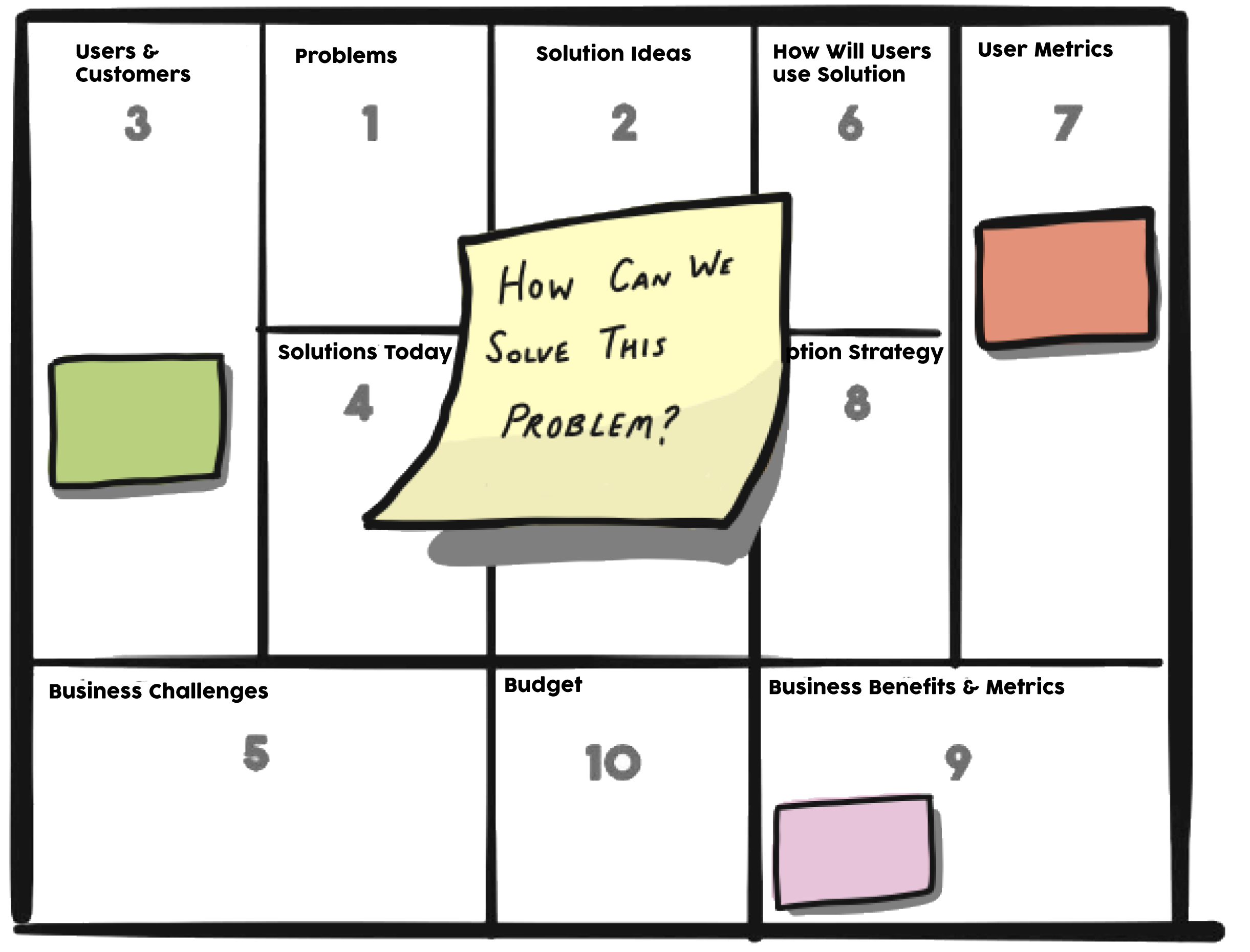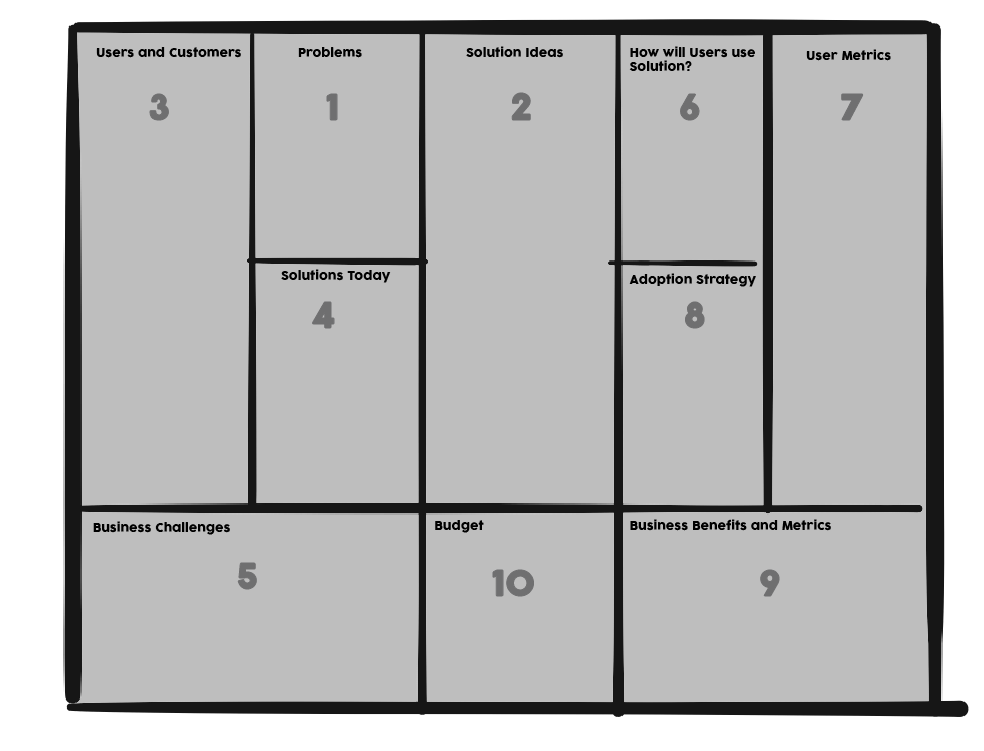Solve Problems and Create Solutions with: Opportunity Canvas

As a product manager you are faced with many challenges. In an ever growing economy you have to stay ahead of the curve to survive as a business. In order to do, you have to understand the business problems and see them in their entirety. With so many factors involved it can difficult. Author of User Story Mapping, Jeff Patton, created a tool to visualize the process and create discussion around the problem or solution at hand.
It is called the Opportunity Canvas. You begin with the problem and solution and navigate through the categories. At CardBoard the Opportunity Canvas has been key in facilitating discussions as we look to improve our product and the customer experience. One of our biggest goals at CardBoard is to start providing new digram types other than just user story maps. One new way to help with increasing your shared understanding is the the new Opportunity Canvas. It provides unique ways to hear the thoughts and ideas of some of your organization’s brightest members.
How can you use the Opportunity Canvas? To get started follow these steps:
- Identity the current problems your users face and how your solution will address them. Determine what the needs, goals or jobs-to-be-done that your solution will address.
- List the product, features or upgrades that solve the problems within your target audience.
- Find what types of users and customers have the challenges that your solution addresses. Look to find the differences in the users and their goals that may differentiate how they use the product. Separate the users into the different types, and understand that you cannot target everyone.
- Answer how users currently address the problem identified. List the products that currently serve as competitors or methods that accommodate their needs currently.
- Of the users and their problems how do they impact your business? If you cannot solve the problem, does it jeopardize your business?
- Once your target customer has your solution, what will be different and how will it benefit them?
- How can you measure usage and value from your customers perspective?
- How will those that do not currently know of your product find it? To those who have your solution how will they integrate it for their use?
- How can you measure impacts to your business (revenue, profit, ROI, etc)?
- What is the opportunity cost if you do not create a solution? How much will it set your organization back? What will your organization save if you do? How can you budget to create the solution?
Things to know when you’re creating an Opportunity Canvas:
- Create a time limit on the exercise, for example, 1 hour maximum. It’s easy to spend too much time planning and not enough time doing. Establishing time parameters can aid in getting back to the work that matters to your business the most!
- It doesn’t have to be perfect, it’s a framing tool! Worry about making the canvas look good later. Be concise and get the ideas out there. Do not worry about how it looks, simply focus on making sure all of your ideas are consolidated in one space.
- You might start with the problem, or you could start with the solution. Whichever you choose, work to find the problem and solution!
- Be specific about users. The better you understand your user, the better you can understand what product you are looking to bring to market.
- Business problems are not user problems! You must distinguish the two. What challenges your business has is not always relevant to the problems of your user.
- Do not be afraid to guess if you do not know. The answer may not always be present, move forward and as you do answer may begin to be uncovered.
Think an Opportunity Canvas can help you or your business out? Check out CardBoard and sign up for your free 14 Day Trial today!
Didn’t find what you need? Visit our Help Center to find answers or get in contact with our team.
[author]

